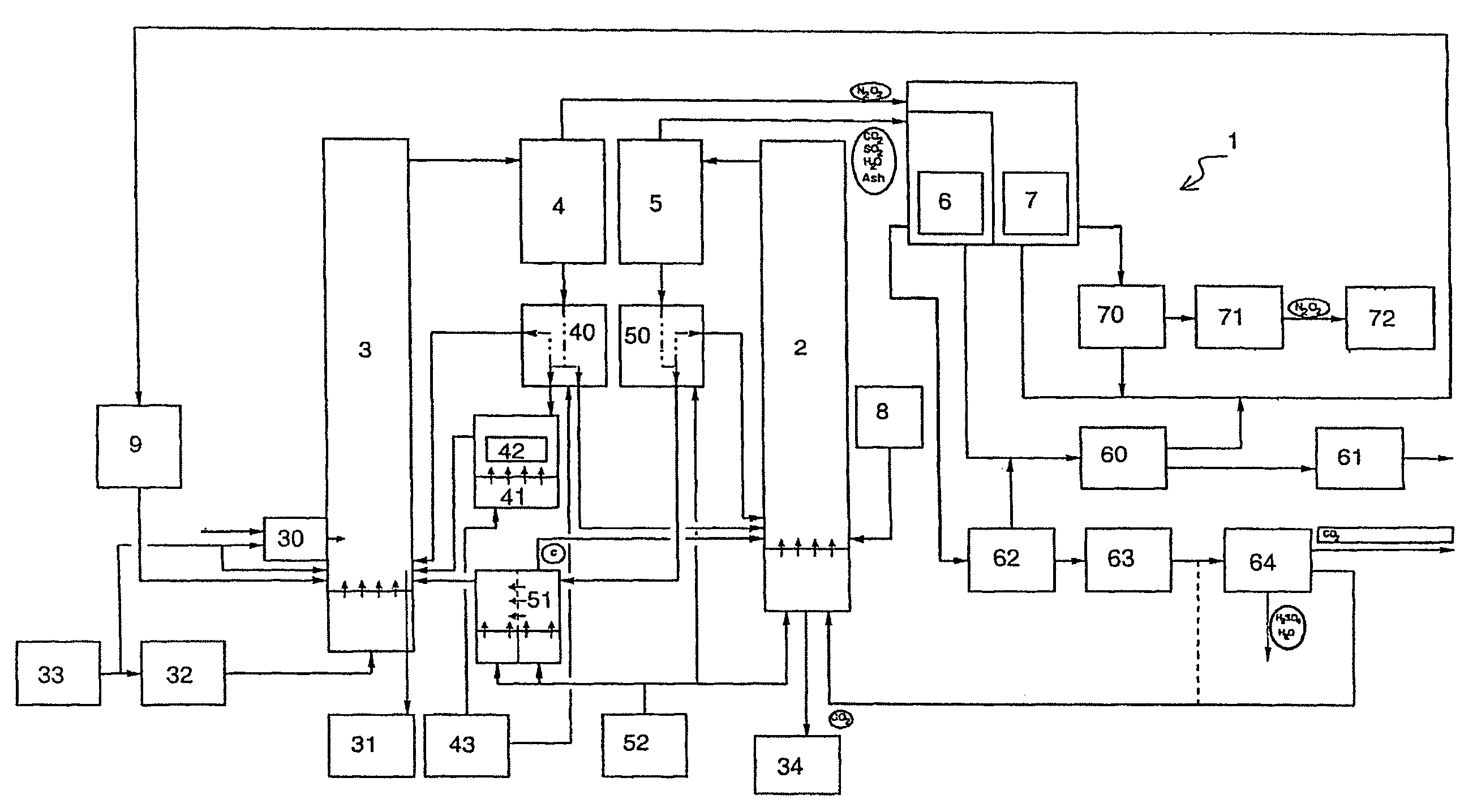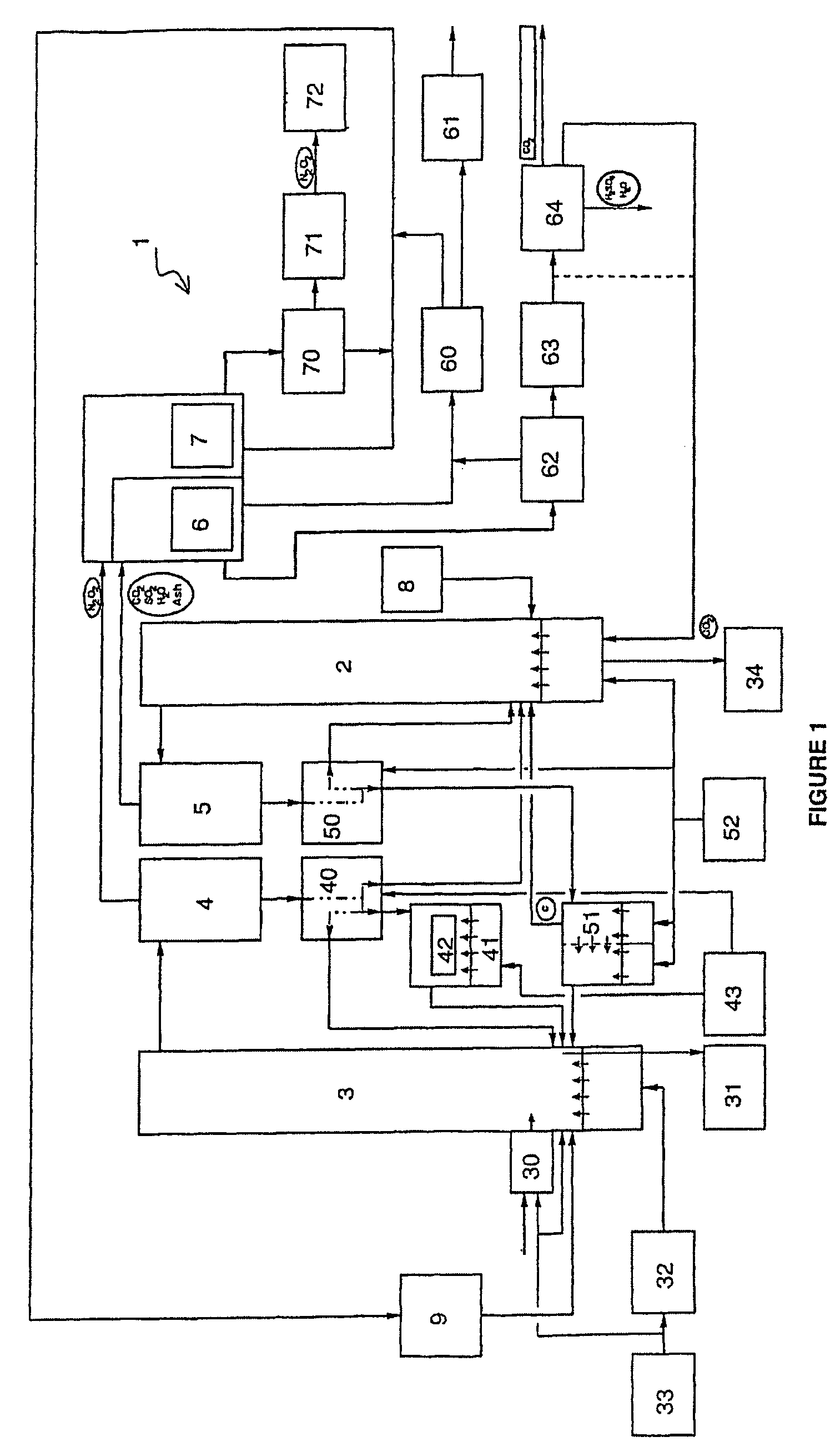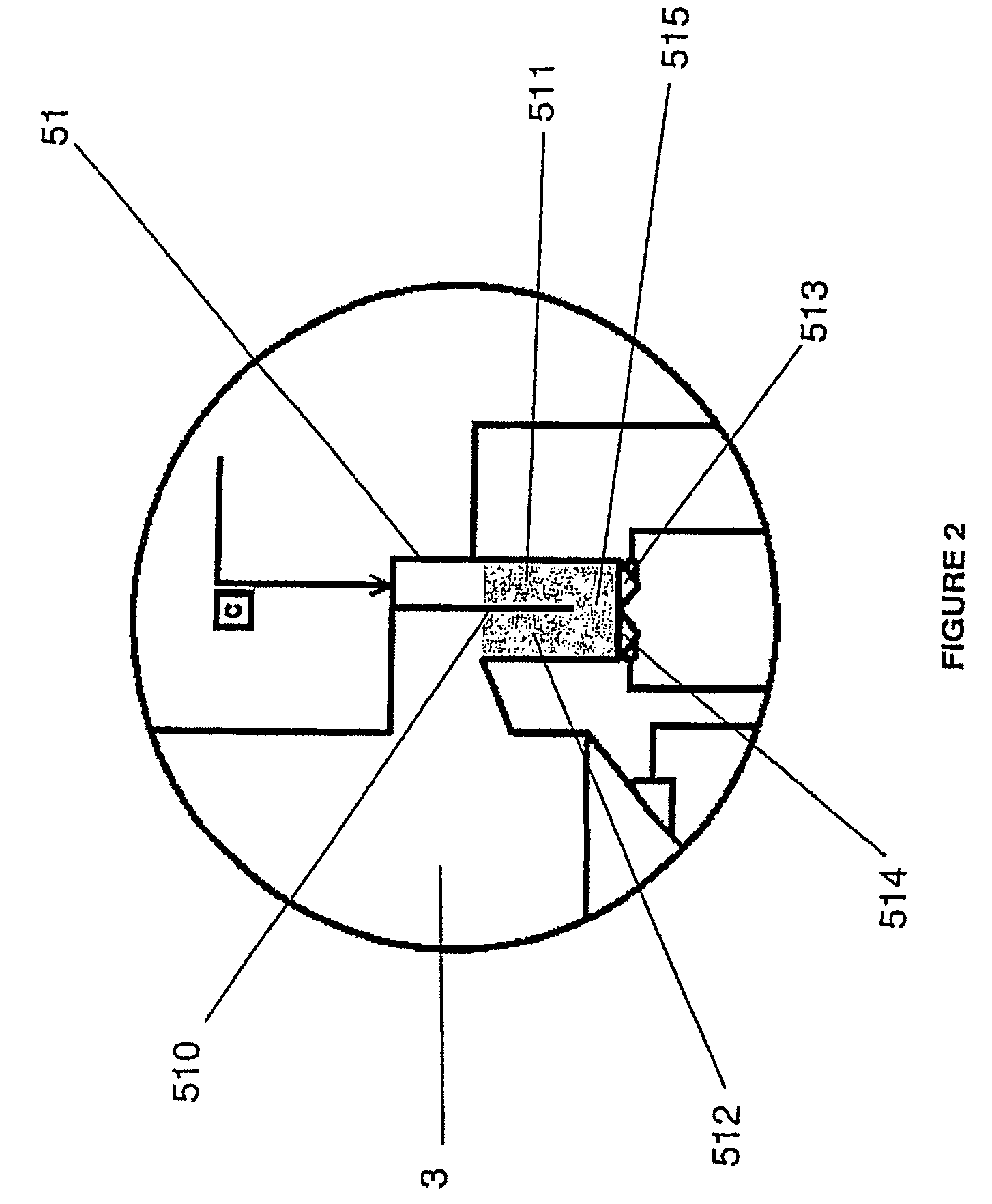Combustion installation with CO2 recovery
a technology of co2 recovery and combustion installation, which is applied in the direction of fluidised bed combustion apparatus, combustion type, lighting and heating apparatus, etc., can solve the problems of gaseous cosub>2, thermal regeneration, and penalize the energy efficiency of the electricity and/or steam production installation, so as to reduce the cost of co2 capture
- Summary
- Abstract
- Description
- Claims
- Application Information
AI Technical Summary
Benefits of technology
Problems solved by technology
Method used
Image
Examples
Embodiment Construction
[0027]The installation 1 includes an oxide reduction reactor 2, an oxide oxidation reactor 3, two cyclones 4 and 5, each dedicated to one reactor, and two rear cages 6 and 7 containing recovery exchangers 66 for the flue gases and 73 for the air, each dedicated to one of the reactors.
[0028]The reduction reactor 2 is fed with fuel from a pulverized coal silo 8. The coal is coarsely ground beforehand.
[0029]The reactor 2 is fluidized by a mixture of steam and recycled CO2. When the installation is started up, the bed is fluidized only by steam.
[0030]After reduction in the reactor 2, the oxides enter the cyclone 5 in which the solid oxide particles are separated from the fly ash and the combustion gases, consisting of CO2, SO2 and steam.
[0031]The fly ash and the combustion gases then enter the heat exchangers 6. The fly ash is separated from the combustion gases in a bag filter 62. The mixture of CO2, H2O and SO2 is then fed into the cooling and condensing circuit 64 via an induced draf...
PUM
| Property | Measurement | Unit |
|---|---|---|
| pressure | aaaaa | aaaaa |
| temperature | aaaaa | aaaaa |
| density | aaaaa | aaaaa |
Abstract
Description
Claims
Application Information
 Login to View More
Login to View More - R&D
- Intellectual Property
- Life Sciences
- Materials
- Tech Scout
- Unparalleled Data Quality
- Higher Quality Content
- 60% Fewer Hallucinations
Browse by: Latest US Patents, China's latest patents, Technical Efficacy Thesaurus, Application Domain, Technology Topic, Popular Technical Reports.
© 2025 PatSnap. All rights reserved.Legal|Privacy policy|Modern Slavery Act Transparency Statement|Sitemap|About US| Contact US: help@patsnap.com



